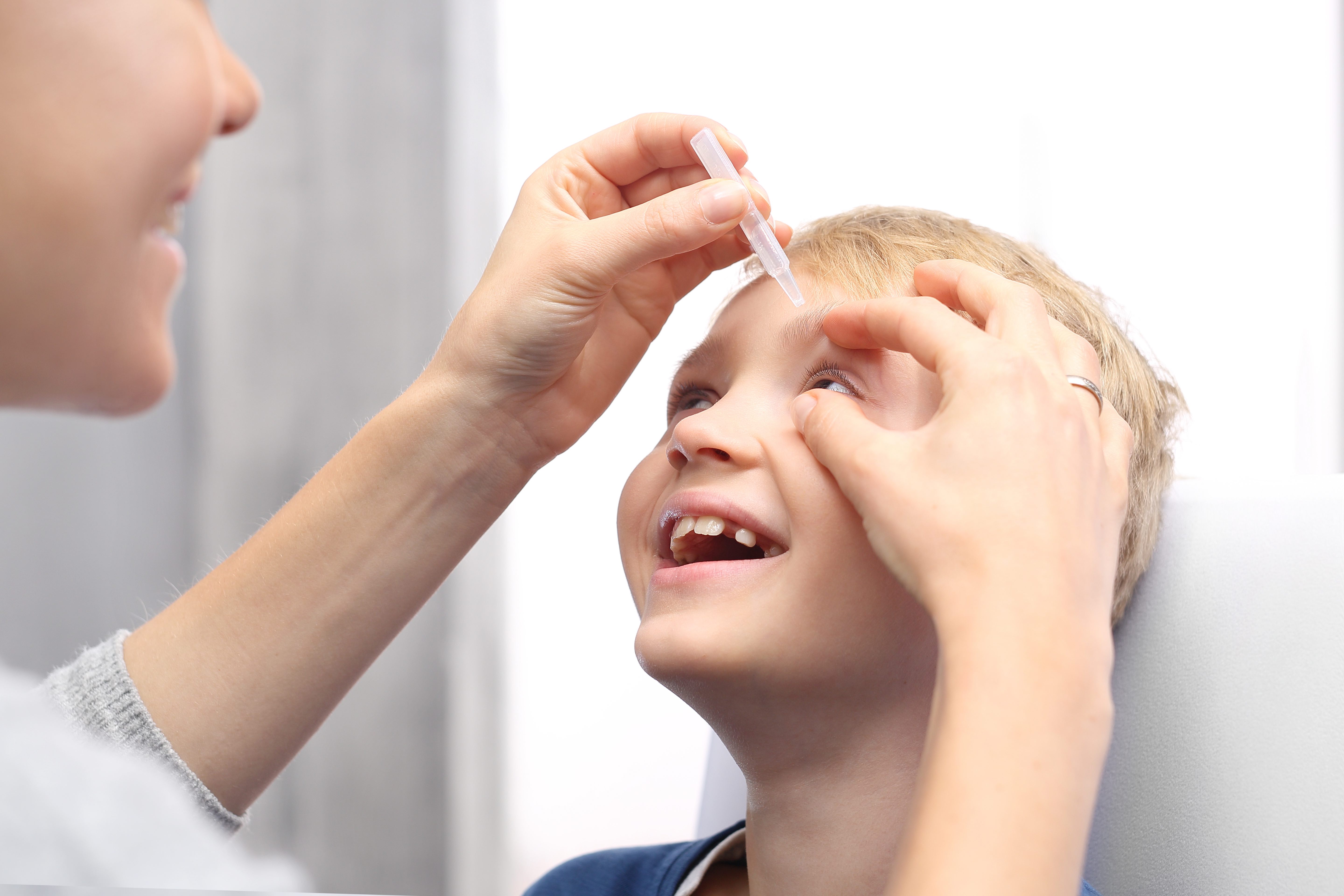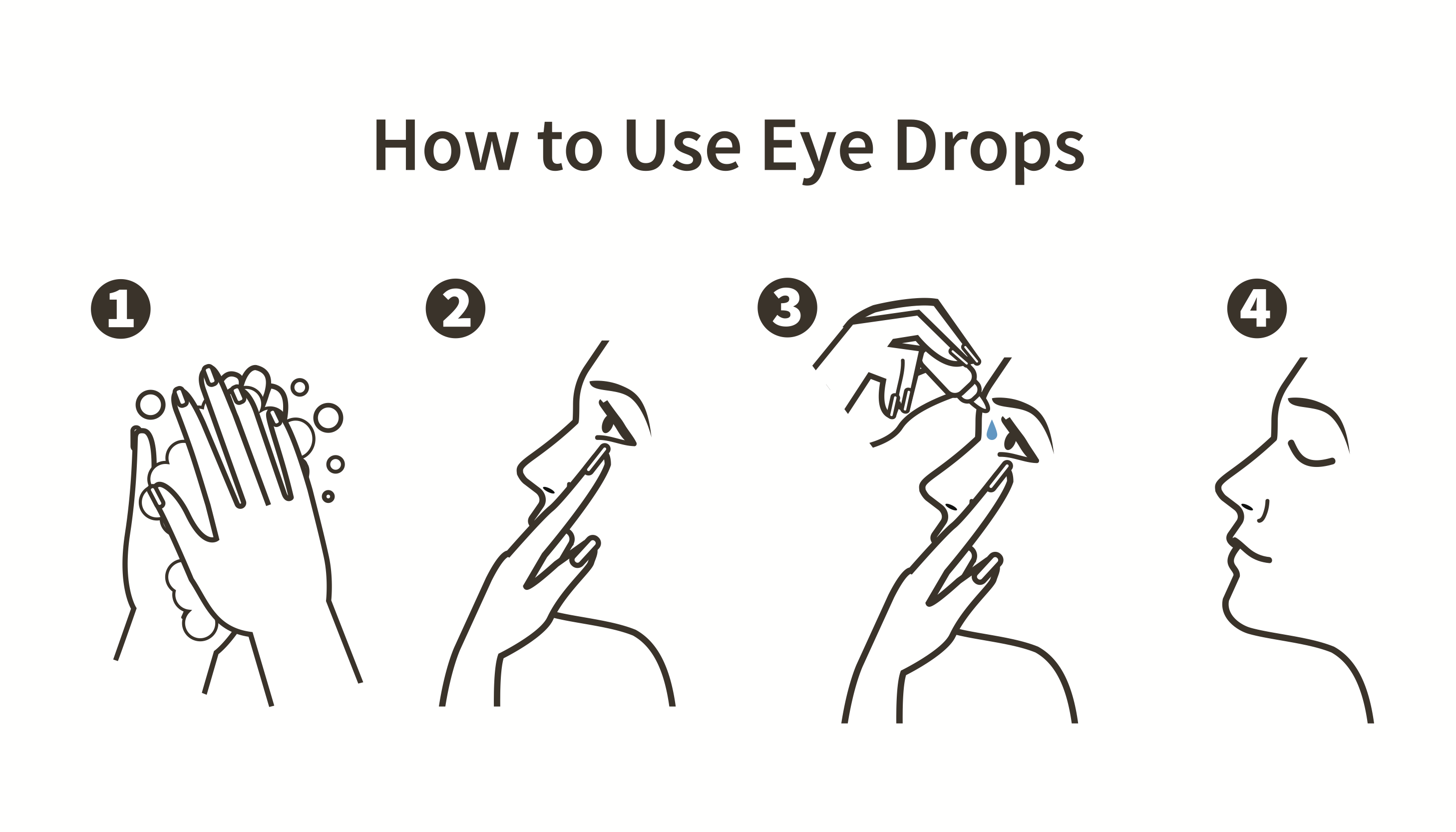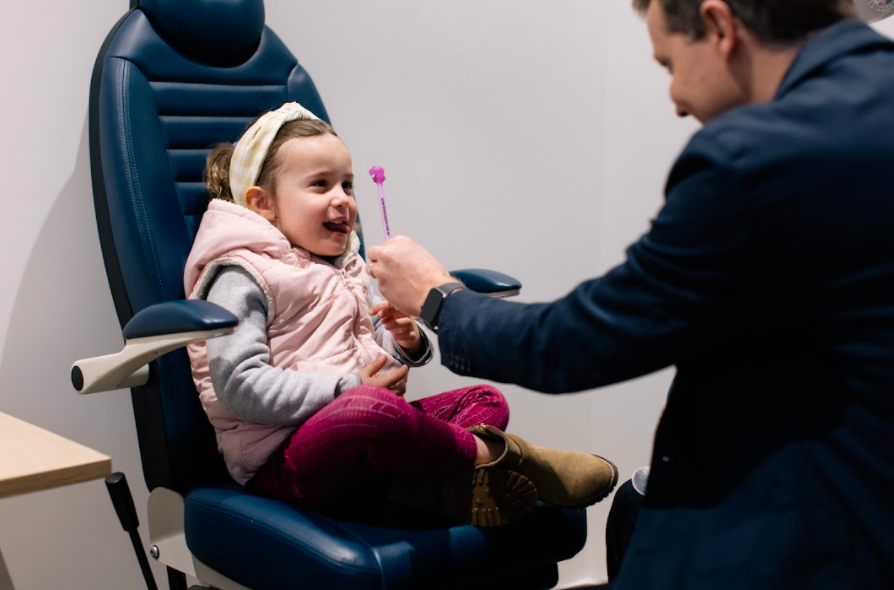Atropine for Myopia Control
Low dose atropine eye drops are a proven treatment to slow myopia progression of myopia in children, protecting your child's eye health in the future.
Atropine eye drops
Atropine drops have been used for many years to control myopia, but until recently they were prescribed at a much stronger concentration (0.5% - 1%). Atropine at that level causes loss of focusing in young children for near tasks and dilates the pupil significantly, leading to light sensitivity.
Studies over the last decade have found that much lower concentrations of atropine, such as 0.02%, have a comparable reduction in myopia progression, without any noticeable effect on pupil size or near-focusing. For example, the ATOM2 study showed the myopia control effect of 75% reduction for the 1%, 0.5% and 0.1% concentrations and 65% reduction with 0.01%. Studies have told us that 0.02% is the highest concentration of atropine that shows no significant change to near focusing or pupil size in children, and has no reported allergic side effects.
How do atropine drops slow myopia?
Initially, it was thought that the reason the atropine drops controlled myopia was due to the fact that the atropine drops paralyse the focusing muscles of the eye. Now, the thought is the atropine molecule affects a receptor in the tissue of the back of the eye, signalling the eye to stop growing excessively. This mechanism is still being studied around the world.

How should atropine eye-drops be used?
Your optometrist will advise on which treatment is best for your child, as well as how often. Please do not self-administer atropine eye drops.
For those who have been advised by an optometrist, we’d recommend:
- For the first few days, please administer eye drops in the afternoon, incase your child has a reaction. If they do have a reaction, it will happen straight away and you can phone your nearest OCULA store (open weekdays until 5.30pm or so depending on which store, weekend hours vary). After the first few days, applying the drops in the evenings is fine.
- Each night, one drop of atropine eye drops to be instilled in each eye.
- Your child should then close their eyes for 1 minute following instillation.
- No other eye drops should be used for 5 minutes after instillation.
Please note: the drops sometimes sting a little, but this shouldn’t last more than a minute. If the eye continues to sting, beyond a minute, please advise your optometrist.
Your child should continue to use their glasses or contact lenses during the day, as atropine will not improve their vision. Uncorrected or under-corrected myopia has been shown to be a risk factor for myopia progression, so any glasses should be accurate and worn during their waking hours.

Follow these steps to properly use eye drops
Are there any side effects?
Eye-related side effects of general atropine eye drops can include:
Blurred near vision, sensitivity to sunlight, pupil dilation (the amount varies from patient to patient and concentration of medication used), stinging or burning, or swelling of the eyelids. While these side effects are rare at the low concentration prescribed by OCULA optometrists; they may still occur to some degree.
General side effects of high-dose atropine eye drops include:
Allergic reaction (difficulty breathing; closing of your throat; swelling of your lips, tongue, or face; or hives), an irregular or fast heart rate, hallucinations or unusual behaviour (especially in children). Other, less serious side effects may be more likely to occur.
If your child experiences any serious side effects, please phone your doctor, or after hours doctor.
Due to the low dose atropine eye drops we prescribe at OCULA, we don’t expect any general side effects. But we do want to make sure you’re well-informed. If you are worried about any possible or unusual side effects, please speak to your optometrist.
How do I get my atropine eye drops?
Atropine drops need to be specially prepared by a compounding pharmacy in Auckland as they are not readily available at concentrations below 0.5%. Drops will come in individual bottles, which should be used for 30 days, before discarding and starting a new bottle.
Here’s how the process works:
-
Every 3 months, your optometrist will email the pharmacy a prescription for a 3-month supply of atropine eye drops. You will be copied on the email, so you are aware that the prescription is ready to be filled.
-
You will then need to contact the pharmacy directly to arrange the payment and shipping of the drops. A 3-month supply (3 bottles) of compounded atropine is $148.28. The drops are costly due to the need for each bottle to be individually diluted, and only two pharmacies in New Zealand are capable of doing this with the necessary accuracy and sterility.
Pharmacy details: Optimus Healthcare , Auckland
Ph: 09 580 0915 | Email: pharmacist@optimushealth.co.nz
Review Appointments
At OCULA we take myopia progression in children very seriously. At your initial myopia control assessment, a variety of specialised measurements will be taken including corneal shape, the length of each eye, a measurement of prescription, assessment of binocular vision and thorough checking of eye health.
Once started on atropine treatment for myopia control it is expected that patients will return for a review of prescription and eye length measurement every 6 months, or sooner if required. At these visits, we will assess the ongoing level of myopia and the success of the treatment, as well as check other aspects of vision and ocular health.

Treatment plans
Option 1: Atropine eye drops only
If your optometrist has recommended atropine eye drops only, this is what you can expect the treatment plan to look like:
|
Appointment |
Time period |
Frequency |
|
Initial appointment |
Day 1 |
One-off |
|
1st review appointment |
3 months |
One-off |
|
Review appointment |
Every 6 months thereafter |
Ongoing |
|
Comprehensive review |
Every 12 months |
Ongoing |
The comprehensive review (every 12 months) includes; a review of the Clinical Myopia Profile to assess the risk of myopia progression. Which involves:
- Repeating the specialized diagnostic measurements to monitor symptoms and check progression and treatment success. The measurements include corneal shape, the length of each eye, a measurement of myopia, assessment of binocular vision, a thorough check of eye health, measurements of objective and subjective responses to therapy or detection of symptoms associated with potential side effects from the medication.
- Reviewing and discussing the most appropriate myopia control treatment.
For continued effect, myopia control treatment needs to continue for as long as there is a risk of myopia progression, which may be through the tertiary study years. If atropine therapy is still agreed by the optometrist, the patient and parent/guardian, then the treatment will be continued for another 12 months.
Option 2: Combination of atropine eye drops and orthokeratology treatment
If your optometrist has recommended a combination of atropine eye drops and orthokeratology treatment, the appointment schedule will look like this:
|
Appointment |
Time period |
Frequency |
|
Initial appointment |
Day 1 |
One-off |
|
1st review appointment |
3 months |
One-off |
|
Review appointment |
Every 6 months thereafter |
Ongoing |
|
Comprehensive review |
Every 12 months |
Ongoing |
The comprehensive review (every 12 months) includes; a review of the Clinical Myopia Profile to assess the risk of myopia progression. Which involves:
- Repeating the specialized diagnostic measurements to monitor symptoms and check progression and treatment success. The measurements include corneal shape, the length of each eye, a measurement of myopia, assessment of binocular vision, a thorough check of eye health, measurements of objective and subjective responses to therapy or detection of symptoms associated with potential side effects from the medication and/or orthokeratology treatment.
- Reviewing and discussing the most appropriate myopia control treatment
For continued effect, myopia control treatment needs to continue for as long as there is a risk of myopia progression, which may be through the tertiary study years. If the combination of atropine-orthokeratology therapy is still agreed by the optometrist, the patient and parent/guardian, then the treatment will be continued for another 12 months.
Prevention is key
Even though myopia is a genetic condition, there are many ways you can prevent myopia from developing.
As well as an assessment, our Kids Vision specialists can offer the best advice on how to manage your child’s eye health, from eye exercises and therapy, to eating well, lifestyle habits and limiting screen time.
